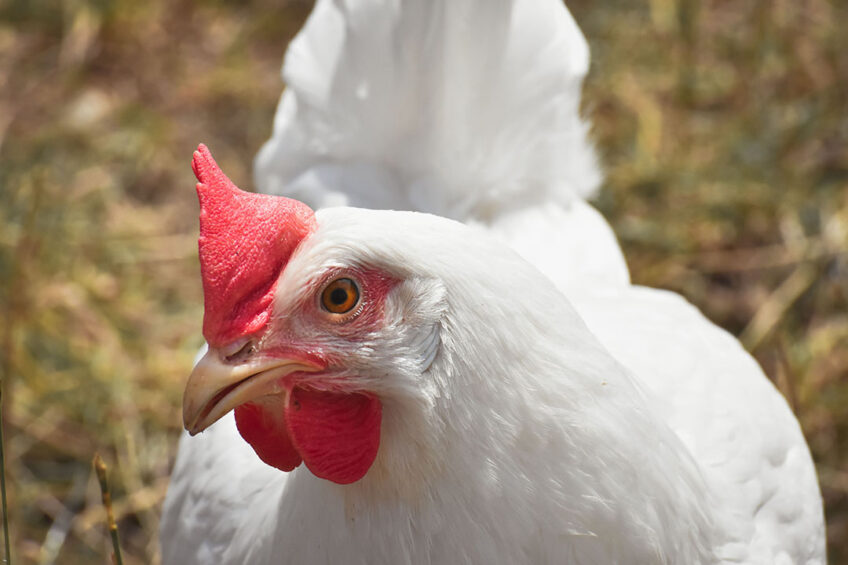Essential nutrients to mitigate broiler lameness

Lameness is a major production disease affecting broiler welfare and profitability. The economic losses due to lameness are a result of additional labour, repeated treatments, euthanasia, early culling and (re)production losses.
It is estimated that up to 16% of broilers in a given farm are lame. Bone, tissue, and neural disorders due to nutrient deficiencies, and occasionally nutrient excesses play major roles in the development of broiler lameness. As a result, minerals and vitamins are regularly supplemented in broiler diets to prevent nutrient deficiencies, to meet broilers’ higher requirements during stressful conditions in commercial production system, and to prevent financial losses and welfare problems caused by lameness.
Vitamin D and its metabolites
Vitamin D is usually supplemented in synthetic forms to broiler diets because the raw materials contain little or no vitamin D. The potency of vitamin D3 is much higher than that of vitamin D2 for broilers, therefore, it is preferred to add vitamin D3 to broiler diets during the first few days of life to reduce early growth problems in commercial broiler production systems.
The required vitamin D3 for cortical bone quality decreases after 14 days of age. High dietary levels of vitamin D increase the utilisation of phytate phosphorus and the retention of calcium and phosphorus, and negatively affect leg health and body weight. Furthermore, an increase in calcium and phosphorus requirements, and ultraviolet light in modern broiler genotypes impact vitamin D3 requirements to create optimum growth and bone ash. Supplementing broiler diet with 25-hydroxycholecalciferol, the most biologically active hormonal metabolite of the vitamin D, decreases the incidence and severity of leg disorders and enhances bone mineralisation.
Vitamins A and E
Vitamin A deficiency leads to poor calcification and bone development in broilers; therefore, this vitamin is supplemented to the diet at relatively high levels. However, there are conflicting results regarding the impact of excessive vitamin A on the incidence of lameness in broilers. Vitamin E deficiency enhances the incidence of leg abnormalities, especially lateral or medial deviation of the distal tibia or proximal metatarsus and it leads to muscular dystrophy manifested in impaired mobility, as well. Excessive dietary levels of vitamins A and E negatively impact vitamin D3 utilisation in broilers fed calcium-deficient and vitamin D-deficient diets.
Vitamin B
Vitamin B group deficiency is associated with leg abnormalities and lameness in broilers. Excessive dietary protein increases the metabolic requirement for vitamin B6, which leads to stunted longitudinal bone growth. Although, supplementation of vitamin B6 and zinc reduces the incidence of leg abnormalities and lameness. Barley and wheat contain low biotin levels which results in deformity of the tibiometatarsal joint accompanied by slipped tendons, footpad dermatitis, and bacterial infections spreading to the joints. Moreover, deficiency of choline, often grouped with the vitamin B complex due to its similarities, is linked to tibiometatarsal joint deformity and lameness. Niacin deficiency leads to leg deformities, medial deviations of the tibiotarsal and tarsal-metatarsal bones. Riboflavin (vitamin B2) deficiency causes leg deformities, curled-toe paralysis, and peripheral nerve degeneration.
Vitamin C and folic acid
Vitamin C (ascorbic acid) is involved in collagen synthesis and prevents the development of leg abnormality and lameness in broilers. Folic acid deficiency enhances the frequency of lateral or medial bone deviation with slipped tendons, and crooked toes. Excessive dietary protein and fat interfere with folic acid metabolism, and augment leg disorders at marginal folic acid levels.
Calcium and phosphorus
Calcium and phosphorus are important minerals in bone and the balance between these nutrients is essential in broilers diet. Suboptimal levels of calcium and phosphorus or imbalance between these nutrients leads to rickets, and tibial dyschondroplasia. Calcium is usually abundant in most feed sources, and much of the phosphorus in cereal grains is in the form of phytates, which have low availability for broilers. Factors such as dietary concentration, physical and chemical forms of minerals, passage rate of feed and viscosity of digesta, chelating agents and mineral interactions, gut pH, and interactions with dietary protein, fat and carbohydrate impact calcium and phosphorus absorption.
Concluding remarks
Suboptimal nutrition due to the quality, consumption and absorption of feed ingredients, and errors in formulation and mixing of the diets increases the incidence of broiler lameness in commercial settings. Due to rapid alterations in growth potential of modern broiler genotypes, the optimal level of certain nutrients essential for leg health needs to be corrected. In addition, further research is required to revise commercial broiler diet formulation to improve health, welfare, and productivity.
Source:
Nutritional factors of importance for optimal leg health in broilers: A review











